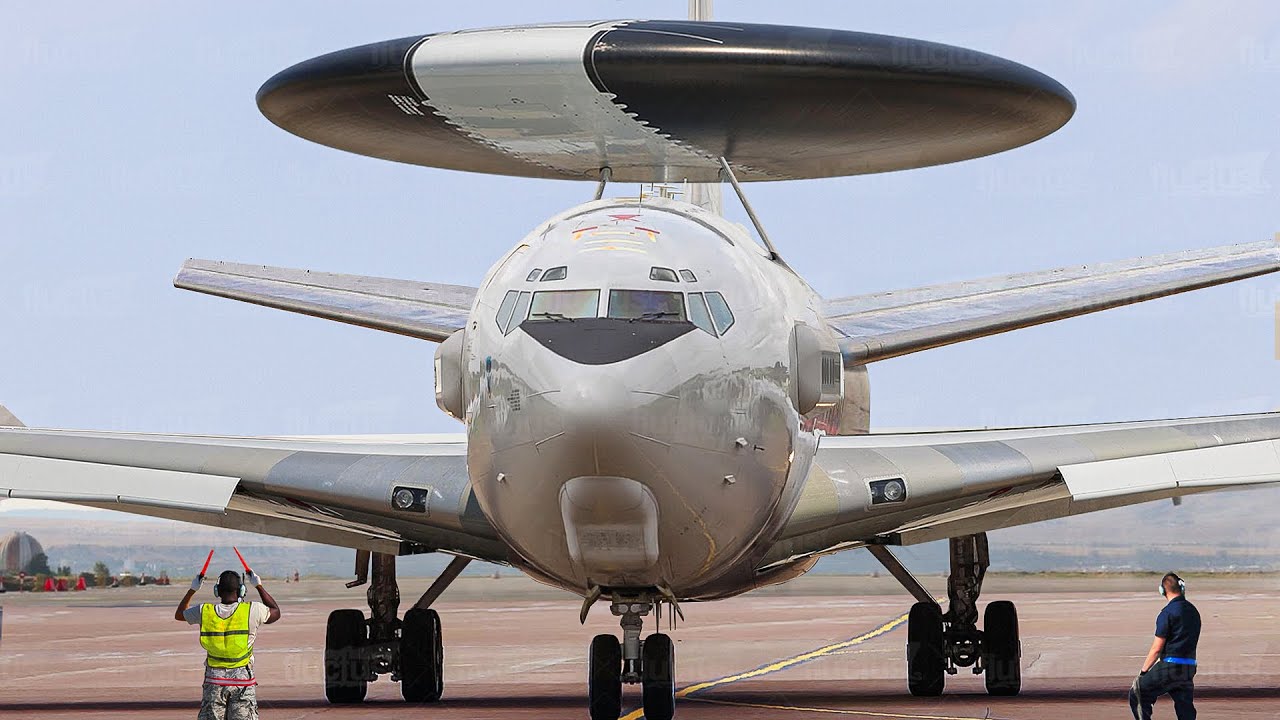Moving forward, let’s talk about the Boeing E-3 Sentry, an aircraft that may look peculiar with its radar dome on top of the fuselage and lack of weaponry, but is one of the most crucial aircraft for the United States military. The radar dome allows the E-3 to function as an Airborne Warning and Control System (AWACS), providing reconnaissance and facilitating communication in the skies. The first E-3 was delivered to the US military in March 1977, and since then, it has offered superior defensive and offensive capabilities.
The E-3 is 152 feet long, features a wingspan of about 145 feet, and weighs 185,000 pounds. It carries state-of-the-art systems designed for top-class reconnaissance in hostile environments. The E-3 Sentry can be scrambled at a moment’s notice. Ground crews ensure it is ready for flight by inspecting the landing gear, basic avionics, and fluid levels before takeoff. Once the ground crews give the green light, the pilots enter the cockpit and start the engines. The E-3 then taxis toward the runway and takes off.
The E-3 is capable of flying for more than eight hours. If the mission requires extended flight time, a fuel tanker can be used for in-flight refueling. The E-3 excels in terms of speed, altitude, and maneuverability. It takes the radar thousands of feet into the air, providing detailed information on everything from hostile aircraft to weather conditions. This information is invaluable during battles and routine troop movements.
The E-3 typically gathers large amounts of data, which are analyzed and monitored by 12 to 20 highly trained mission crew members. The radar dome is 30 feet in diameter and 6 feet thick, with an effective range of up to 250 miles. The E-3 Sentry has a specialized mission suite, including consoles that display computer-processed data in graphic and tabular formats on video screens. The mission crew uses this data for surveillance, identification, weapons control, battle management, and communications functions.
New pilots learning to fly the E-3 Sentry perform touch-and-go landings, where they land on a runway and take off again without coming to a full stop. This allows many landings to be practiced in a short time. The E-3 Sentry is a complex aircraft requiring regular maintenance to remain mission-ready. When an aircraft lands, maintenance teams thoroughly evaluate it to ensure everything is in working order. They specifically inspect the landing gear, trim lines, radar dome, and avionics. Any part that is not working is immediately replaced or repaired. The crew also tops off engine oil, lubricates landing gear, and inspects engines for potential damage, ensuring the E-3 Sentry is ready for its next flight at a moment’s notice.
In addition to inspecting the E-3 Sentry’s engines, maintenance teams regularly maintain its Auxiliary Power Unit (APU). The APU is a small gas turbine engine mounted in the tail cone of the aircraft, providing electrical and mechanical power for the main engines. Once the engines are started and generators are online, the APU automatically shuts down after completing the taxi check. The main purpose of the APU is to kickstart the engines, making it a vital component that must be maintained regularly.
Since the 1970s, the Boeing 747 has been one of the most widely used aircraft globally. However, only a few are aware of the specially modified aircraft that Boeing has developed using the 747 airframe. For instance, the Boeing E-4 serves as a strategic command and control military aircraft operated by the United States Air Force.



